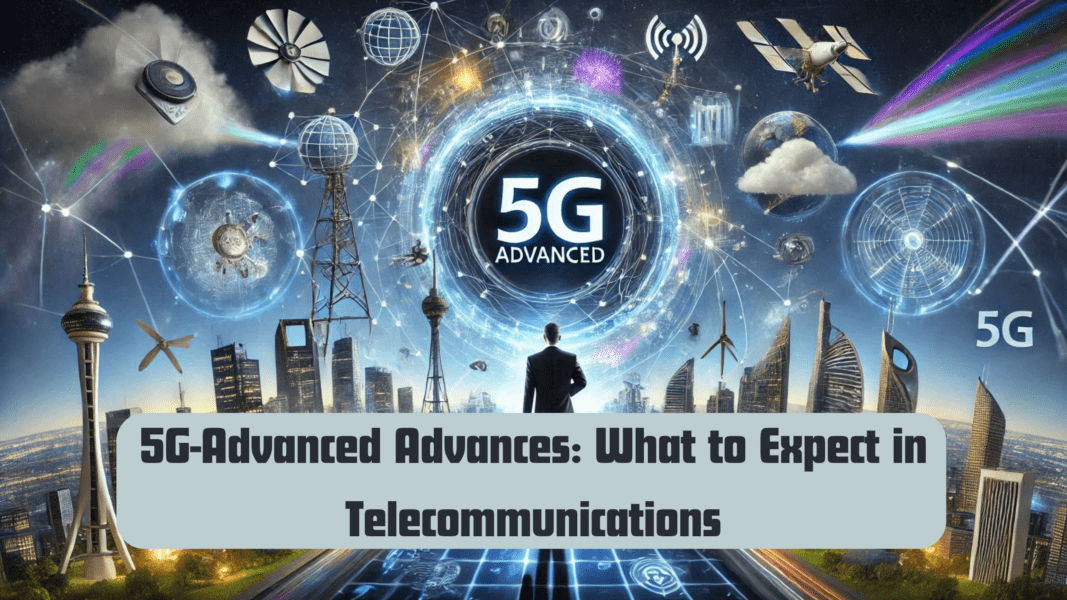The telecommunications industry is poised for significant transformation as wireless operators and vendors gear up for the adoption of 5G-Advanced Advances in 2025. This next-generation networking technology, introduced under the 3GPP standards as part of Release 18, promises to bring revolutionary features and capabilities to the 5G landscape.

From enhanced energy efficiency to support for cutting-edge technologies like extended reality (XR), 5G-Advanced aims to redefine the way networks operate and deliver services. However, the transition to this new standard is not without its challenges.
What Is 5G-Advanced?
5G-Advanced, officially branded as part of the 3GPP Release 18 specifications, represents the evolution of 5G technology. Similar to how 4G LTE advanced through LTE-Advanced in 2011, 5G-Advanced introduces a suite of upgrades designed to improve performance, efficiency, and capability.
Ericsson and Qualcomm, key players in the telecommunications space, have emphasized the importance of 5G-Advanced in enabling:
- AI and Machine Learning (AI/ML) Integration
- Support for Reduced Capability (RedCap) Devices
- Energy-Efficient Networks
- Improved MIMO (Multiple Input, Multiple Output)
- Enhanced Network Slicing for Better Service Segmentation
These advancements are expected to drive innovation in industries ranging from healthcare to entertainment, with applications like XR leading the charge.
Also Read: T-Mobile 5G Home Internet Waitlist: Why Millions Are Waiting
The Road to 5G-Advanced Adoption
Standalone (SA) vs. Non-Standalone (NSA) 5G
One of the prerequisites for 5G-Advanced adoption is the deployment of standalone (SA) 5G networks. Unlike non-standalone (NSA) 5G, which relies on existing 4G LTE infrastructure, SA 5G offers the full potential of 5G capabilities, including low latency and network slicing.
However, operators globally have struggled with the transition to SA 5G due to:
- Implementation Complexity: SA 5G requires significant infrastructure upgrades.
- Cost Concerns: Operators are hesitant to invest heavily in new technology, especially when the initial deployment of 5G has yet to yield substantial returns.
Challenges in Implementing 5G-Advanced
- Financial Constraints
Operators must allocate additional funds to implement 5G-Advanced features, a challenging prospect given the limited revenue growth from initial 5G rollouts. - Technical Barriers
Deploying advanced features like MIMO improvements and AI-driven interference sensing demands expertise and sophisticated technology. - Consumer Demand
The lack of widespread consumer awareness and demand for 5G-Advanced capabilities may slow adoption rates.
Also Read: Apple’s In-House 5G Modem Plans Take Shape for 2027 iPhones
Opportunities with 5G-Advanced
Despite these challenges, the opportunities presented by 5G-Advanced are immense.
Energy Efficiency
Telecommunications companies are under pressure to adopt sustainable practices. 5G-Advanced introduces energy-efficient protocols that reduce power consumption, making it an attractive option for eco-conscious operators.
Extended Reality (XR)
With XR applications gaining traction in gaming, education, and healthcare, 5G-Advanced offers the low-latency, high-bandwidth capabilities required for seamless XR experiences.
Enterprise Use Cases
From smart factories to remote surgeries, 5G-Advanced enables highly reliable and customizable networks tailored to specific business needs.
Vendor Contributions to 5G-Advanced
Ericsson’s Programmable Networks
Ericsson has been at the forefront of 5G-Advanced innovation, showcasing features like interference sensing, which boosts network performance by mitigating signal disruptions.
During trials with Optus in Australia, Ericsson demonstrated a 22% increase in average user throughput, highlighting the potential of its programmable network technology.
Qualcomm’s Vision
Qualcomm envisions a future where 5G-Advanced facilitates:
- Enhanced XR experiences
- Reduced device complexity with RedCap
- Lowered energy consumption for IoT devices
Also Read: The Truth Behind Why Does 5G Sucks?: Myths, Facts & Reality Unveiled
Looking Ahead: The Telecom Landscape in 2025
Operator Strategies
Leading operators like T-Mobile have already announced plans to introduce 5G-Advanced services by the end of 2025. T-Mobile’s early adoption of standalone 5G and advanced features like network slicing positions it as a frontrunner in this space.
Spending Resurgence
After years of conservative spending, telecom operators are expected to resume investments in network upgrades, with 5G-Advanced technologies playing a central role.
Consumer Impact
For consumers, 5G-Advanced means faster, more reliable networks, and innovative applications across various domains.
Conclusion
The 5G-Advanced advances set to unfold in 2025 represent a significant leap forward in telecommunications. By addressing current limitations and introducing groundbreaking features, this next-generation technology is poised to revolutionize connectivity for consumers and industries alike. While challenges remain, the promise of energy efficiency, enhanced capabilities, and innovative applications makes 5G-Advanced a transformative force in the telecom sector.
Also Read: Google Fiber Simplifies Internet Plans with New Gig Options
Frequently Asked Questions (FAQs)
- What is 5G-Advanced?
5G-Advanced is the next evolution of 5G technology, introduced in 3GPP Release 18, featuring enhanced performance, energy efficiency, and new capabilities. - How is 5G-Advanced different from 5G?
It includes advanced features like AI/ML integration, improved MIMO, extended reality (XR) support, and better energy efficiency compared to standard 5G. - What are the challenges of implementing 5G-Advanced?
Key challenges include financial investment, technical barriers, and limited consumer demand. - Why is standalone (SA) 5G important for 5G-Advanced?
SA 5G unlocks advanced features like network slicing, which are essential for the full functionality of 5G-Advanced. - What industries will benefit from 5G-Advanced?
Industries like healthcare, gaming, manufacturing, and education are expected to see significant benefits. - Which telecom operators are adopting 5G-Advanced?
Companies like T-Mobile have announced plans to introduce 5G-Advanced services by 2025. - What role does AI/ML play in 5G-Advanced?
AI/ML enhances network optimization, enabling features like interference sensing and energy-efficient operations. - What are RedCap devices?
Reduced Capability (RedCap) devices are simplified IoT devices supported by 5G-Advanced, offering lower power consumption and cost. - How does 5G-Advanced improve energy efficiency?
It introduces protocols that reduce power consumption, aligning with sustainability goals. - When will 5G-Advanced be widely available?
While some operators plan to launch 5G-Advanced services in 2025, widespread availability will depend on global adoption rates.

